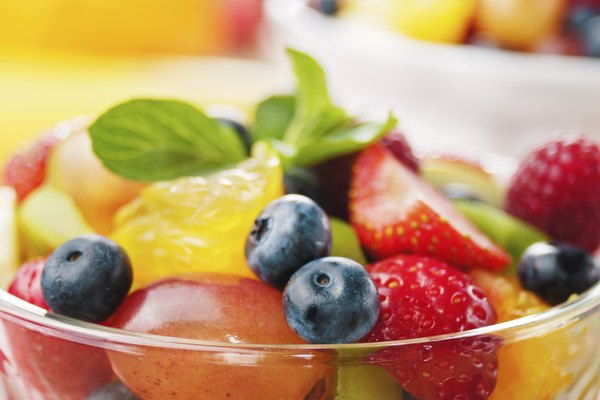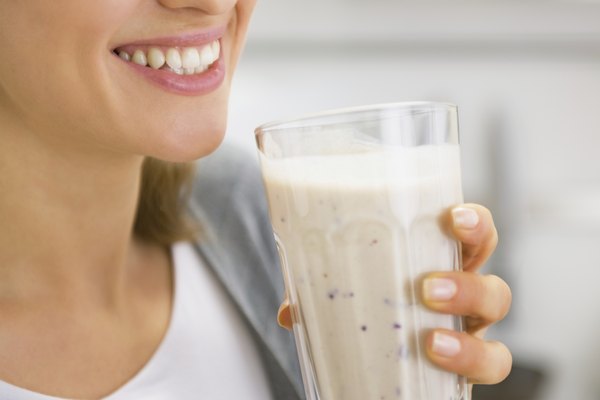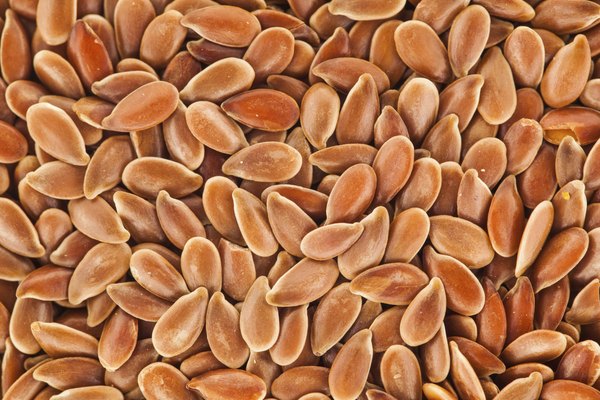Fiber is the part of plant foods that your body can’t digest, so it may be surprising that it’s such an important part of a healthy diet. The National Institutes of Health recommends that adults get between 20 and 35 grams of fiber each day. Adding more fiber can help to prevent constipation and reduce the risk of diverticular disease, as well as help manage diabetes, reduce cholesterol and even help with weight loss by keeping you full. Starting the day with a high-fiber breakfast is a good way to help meet your goal.
Quick and Easy
Hot or cold cereal is a fast and easy high-fiber breakfast option. When buying cereal, compare the food labels for fiber grams, and try to choose the one with more fiber -- at least 5 grams per serving is a good goal. The best choices for higher-fiber cereals include bran flakes, shredded wheat or oatmeal because each provides at least 5 grams of fiber per serving. Add a serving of fresh fruit for more fiber. Some higher-fiber fruits include a chopped apple or pear or 1/2 cup of raspberries, which will each provide about 4 more grams.
When You Have Time
If you have time to cook in the morning, you can get more creative with high-fiber breakfast foods. Instead of making a plain or cheese omelet, load it up with lots of vegetables like spinach, onions, mushrooms and tomatoes. Serve it with 100-percent whole-wheat toast that has at least 3 grams of fiber per slice. Baked oats can be another healthy, high-fiber breakfast, especially if you add lots of fruit, nuts and even a sprinkle of wheat germ on top for extra crunch and a bit of extra fiber. Just 2 tablespoons of chopped almonds, wheat germ and berries can add an additional 5 grams of fiber to oats, which are already fiber-rich.
Drink It
While fruit and vegetables have fiber, their juice has little to none. If you want to drink your breakfast, make a smoothie instead, with just a little juice or milk, and lots of whole fruits and vegetables like peaches, melon, carrots and spinach. Adding a tablespoon of chia seeds will give you an extra 5 grams of fiber and also help to thicken up your smoothie. When shopping for breakfast smoothie ingredients, stock up on frozen berries, which average about 5 grams of fiber per cup.
Fiber Boosters
Even if breakfast is a lower-fiber cereal or plain scrambled eggs, there are a few ways to boost the fiber in those foods too. Consider sprinkling either with a few tablespoons of ground flaxseeds, hemp hearts, wheat germ or almonds for some added crunch and a quick fiber boost. Flaxseeds can give you almost 7 extra grams in 1/4 cup, and the others will provide 4 grams. If you’re new to a high-fiber diet, be sure to drink lots of water and add extra fiber slowly, since too much too quick can cause gastrointestinal distress.
References
Writer Bio
Anne Danahy is a Boston-based RD/nutritionist who counsels individuals and groups, and writes about healthy eating for wellness and disease management. She holds a Bachelor of Arts from the University of Notre Dame, and a Master of Science in food and nutrition from Framingham State University in Massachusetts.
Image Credit
Arx0nt/iStock/Getty Images








